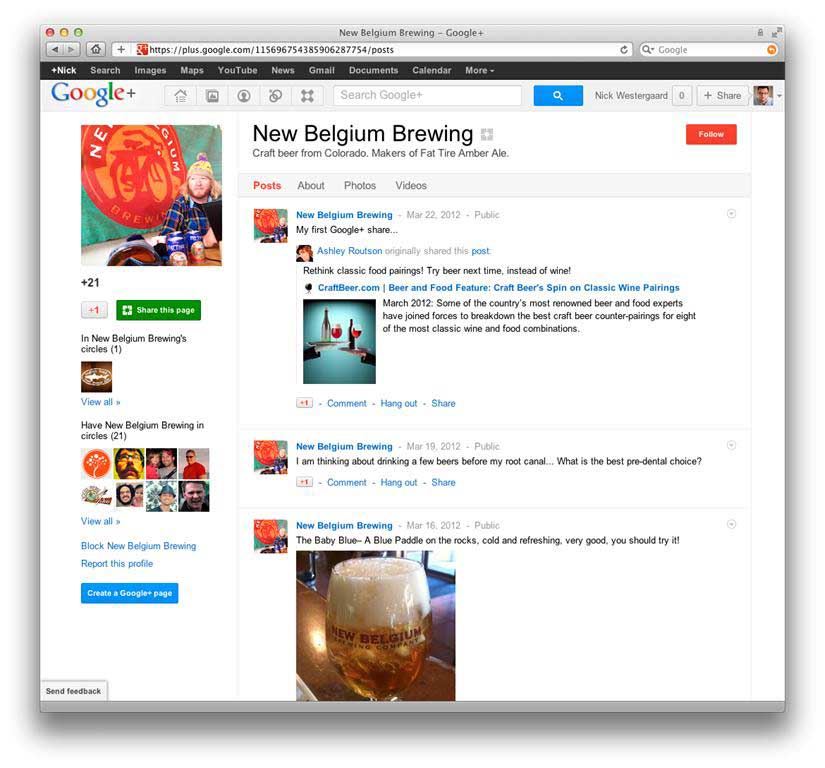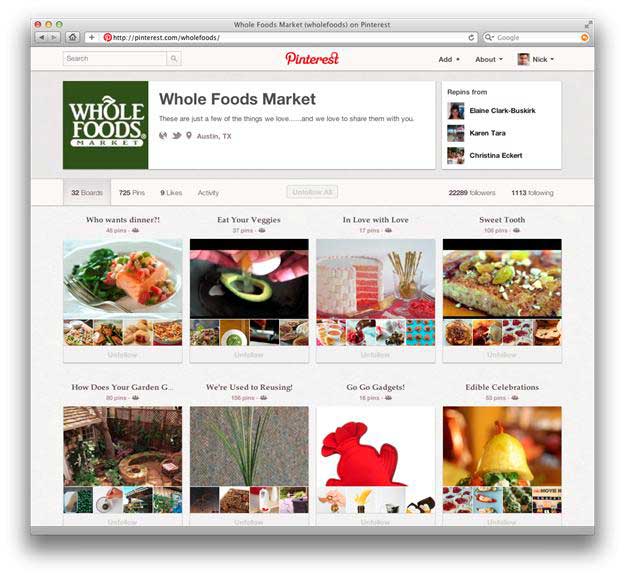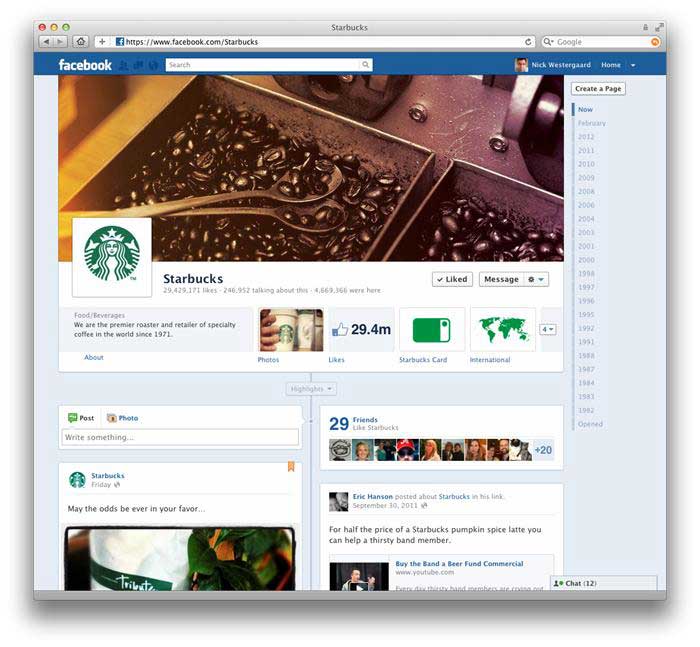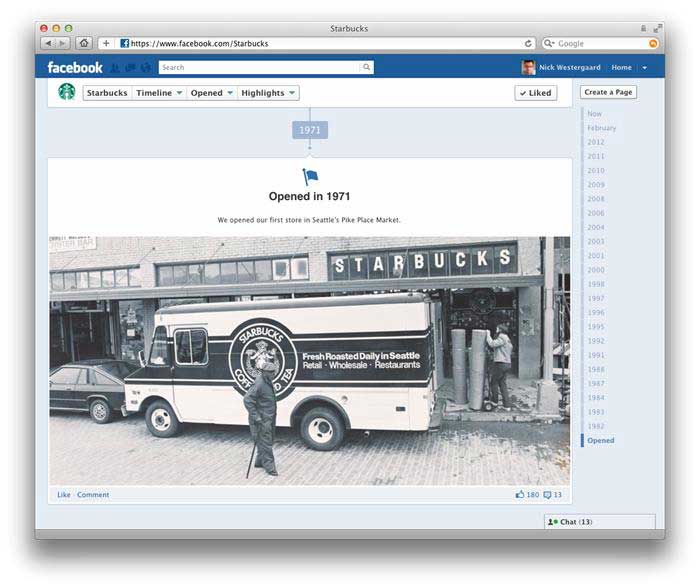Though not making nearly as many waves as Pinterest, Instagram is quickly becoming a cult favorite. In 2011, the photo-sharing application was named the App Store's App of the Year. Although many dismiss the mobile-only, easy-photo-filter app as just a fun tool for hipsters to take funky photos, brands such as General Electric and Ben & Jerry's are finding traction using the network as a visual storytelling platform.

Facebook Timeline
Boasting the world's third largest online population, Facebook is the 600-pound gorilla in any conversation about social brands. It's no surprise, then, that the giant just sent a wave of visual updates down the beanstalk. With Facebook's "Timeline" update, brands can enjoy several new features that rely heavily on bold graphics and visual storytelling: the cover photo, the timeline itself, and larger images on wall posts (RIP thumbnail graphics).
Twitter, Foursquare, and Google+
Though their changes are not as substantial as those of the previously noted social platforms, other networks are also jumping on the visual bandwagon. Recent updates on Twitter allow for Twitpics to display in-stream, and Foursquare boasts larger images for posts as well. Google+ also came out of the gate featuring larger images for links and photos than other networks (such as Facebook at the time).
A Checklist for the Visual Revolution
Your brand's visuals, then, are more important than ever. As Convince & Convert's Jay Baer noted during a recent panel at SXSW, we are moving into a time when "content creators may not even have to be writers." What does that mean for marketers?
Here's a six-item checklist to ensure that your brand is ready for the coming visual revolution.
1. The basics still matter
Your visual vocabulary starts with a strong foundation—a solid logo and corporate identity. However, more than making sure that your letterhead and business cards match, your brand team needs to ensure that you have typography that can transcend platforms and a lexicon of app-friendly iconography as well. You also need to consider how your brand can flourish in a controlled ecosystem (e.g., your website) as well as offsite platforms (e.g., Facebook).
2. Have a plan
Though this tip may apply to any new social endeavor, it rings especially true here. Too often, those with visual savvy in organizations (the creatives!) are kept out and are brought in only after the fact—to "make things look pretty." You need to bring in those visual thinkers at the initial stages of your campaigns to help you visualize your story across social channels.
In addition to personnel, you also need a plan for attacking various platforms. What are you pinning on Pinterest? How do you use Instagram?
3. Photography can't be an afterthought
Many organizations have a couple of trusted photographers they contact in times of need, (e.g., for events or launches). That won't suffice any more. You need a strategy for consistently creating more interesting imagery to feed the larger spaces on Facebook's Timeline... and for creating the slices of life for visual storytelling on Instagram. (Fun fact: New Belgium Brewing, a Colorado brewery, shares Instagram responsibilities among five photographers for greater variety in its brand story.)

4. Teach storytelling
Take some time to teach your team how to capture moments and tell stories visually. Consider bringing in a photographer to deliver a guest lecture for some Friday fun.
5. Understand the mechanics of 'pinable' images
Though Pinterest can be a powerful platform for a brand, using it still requires planning. That means including large, engaging photos that stand out in a sea of boards. You also need to be cognizant of the need to stand out when coding your site to ensure that your images are "seen" by Pinterest's bookmarklets and other pinning tools.
6. Make your past as visual as your present and future
In addition to covering your visual bases from now on, make sure you digitize images from your brand's past. Tools such as Facebook's Timeline give tools to brands for telling their stories socially. Coke and Starbucks, for example, do a great job of that on their Facebook pages.
* * *
As the innovations outlined above remind us, the social Web is only getting more visual. A picture is, again, worth a thousand words. People can scan pictures much more quicker than they can scan thousands of words. Therefore, content in the form of images helps us feed our info-snacking culture. As brand builders, we need to make sure we are leaving appropriate visual snacks out for our audiences.
Is your social brand ready to get visual?








